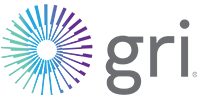July 2, 2024
Improving Efficiency in the Operating Room: The Importance of Standardized Room Turnover
Healthcare professionals are constantly striving to improve patient care and enhance efficiency in their daily practices. In the operating room (OR), one key aspect that significantly impacts both patient outcomes and workflow is the turnover time.
Turnover time refers to the window between consecutive surgical cases – from when a patient exits an OR to when the next patient enters. It is crucial for this process to be efficient and well-organized to maximize the utilization of resources, minimize delays, and provide additional time to focus on the patient, ultimately improving patient outcomes.
So how can we improve turnover times? One effective solution is through implementing standardized room turnover procedures. These practices are designed to create consistency in the turnover processes by creating a standardized approach for the staff to follow. While there are no industry standards for cleaning and turning an OR, there are many great tools which can support the development or even the enhancement of protocols. One example is the Environmental Cleaning Guidelines from AORN. The key strategies outlined in the guide include:
- Partnering with Infection Control to provide oversight during cleanup and turnover.
- Review turnover procedures with the staff, allowing them to provide input on areas of improvement.
- Implement ongoing training and process improvement reviews for the staff through immediate feedback/coaching.
- Use of fluorescent markers or ATP tests for quick audits, highlighting often-missed areas directly to staff.
Another important aspect which has an impact on room turnover is in supplies. Many facilities have successfully incorporated pre-packed room turnaround kits. These kits consist of disposable supplies and equipment needed for the cleaning and preparation of the surgical suite room between cases. They are designed to create consistency in turnover processes and reduce time spent on inventory management and enhance the standardized room turnover procedures.
Some key benefits of using standardized room turnover kits include:
Standardization of Supplies and Reduction of Waste: Pre-packed supplies reduce staff time to pick and assemble items for the task at hand. In addition, these kits offer the convenience of opening the supplies required in one easy step, reducing labor time spent on compiling individual components and minimizing packaging waste, which supports sustainable practices through the reduction of packing waste. Kits can be standardized to the OR to specific departments, driving consistency in the process through the standardization of supplies.
Infection Control and Fluid Management: Disposable linens are designed to protect both the patient and the equipment, minimizing the risk of cross-contamination, and reducing gross contamination of OR tables, pads, and equipment. Absorbent table sheets incorporate an absorbent top layer, which wicks moisture into the center, protecting the patient and the staff from exposure to fluids, and an impermeable bottom layer. This layer prevents fluids from striking through to the OR mattress and equipment, helping to reduce bioburden and improve room turnover.
Staff and Patient Satisfaction: Using kits provides quick and standardized supplies for staff, resulting in improved turnover times and consistent cleaning practices that also enhance infection control. Additionally, implementing standardized practices will help to ensure the room is turned over efficiently and effectively. When procedures start on time, patient satisfaction improves, the OR reduces losses associated with inactive operating rooms, doctors are happier when they can keep on track.
Process Audit and Cost Reduction: With estimated mean cost of OR time at $37 per minute, even a small reduction of 3-10 minutes in turnover time can result in significant savings by reallocating OR time rather than reducing staff hours. Conduct routine process audits to capture current processes and define further areas for standardization efficiencies or training opportunities.
Staffing Challenges: With the ongoing staffing shortages in the healthcare industry, standardizing practices such as turnover can help mitigate the impact of these shortages on OR efficiency. By reducing errors and incomplete tasks, improving patient volume and workflow, and minimizing time spent on inventory management or set-up, standardized room turnover kits can ultimately enhance overall efficiency in the OR.
It is important for healthcare facilities to prioritize implementing processes that improve patient care while also increasing efficiency. Standardized room turnover is a simple and effective solution that can have a significant impact on both patient outcomes and staff satisfaction. Ultimately allowing the clinical team to focus more on providing what they are trained to do – patient care!
Together, we can enhance patient care, reduce costs, and create a better work environment for our staff.

